July 18, 2008

The design is still fluid, but at between 320 and 360 feet long the vessels approach the 378 foot Hamilton class high endurance cutters in size, but are intended to replace the aging Reliance and Famous class medium endurance cutters. They will be much more capable vessels. 25 vessels are planned.
They are impressive vessels indeed with better sea keeping, rescue and aviation capability as well as the 57mm gun plus a CIWS system.
They also are projected here to cost $323.9 million apiece...
I seriously wonder what we get for that. The broadly comparable (on paper) New Zealand OPV's mentioned in an earlier post cost 45 million a pop, meaning you could buy 7 per OPV.
Now 175 cutters doesn't take into account any hidden costs and is unrealistic from an available personnel.... or fuel....or even pier space perspective. It also true that the NZ OPV, while sturdy and seaworthy lacks any means to defend itself from somebody deciding to take a potshot at it and it probably doesn't have anything like the planned C4iSR or sensors of this thing.
This begs some above the paygrade questions though.
SHOULD the advancements over the New Zealand design cost 7 times as much? (This is not as unlikely as it might seem. the CG design has a real gun and CIWS. Hell, the C4iSR suite might cost as much or more than the admittedly austere Kiwi cutter, and this vessel has twice the number of engines...)
More to the point, does 7 times cost per hull really give optimum capability for the money spent? Could we build more hulls (35 or so) for better ocean coverage and redundancy and possibly have money left over for other things like improvements to small boat stations and C-schools?
Some of this makes sense if it is planned to use them them in short of war operations as suggested here...even then the costs are begining to approach LCS territory.
Is this a Shipbuilding Industry Problem, a Procurement Problem, or something else....or is it not a problem at all and I merely have unwarranted stickershock?
Posted by: The Brickmuppet at
11:37 PM
| Comments (3)
| Add Comment
Post contains 364 words, total size 3 kb.
July 15, 2008
More here, here, here and here.
This is probably a good idea.
The DDX/ DDG1000/ Zumwalt was conceived during the Clinton Administration as a "Land Attack Destroyer". The initial idea behind it was that it would be able to approach a third world shore due to a combination of stealth and general survivability and wreak havoc on the locals with long range guns firing precision guided shells. This is not a destroyer per say, this is in fact a monitor, the modern version of which was pioneered by the UK in WW1 (one example of which is left).
The Clinton administration liked the idea as it saw US forces operating in a variety of UN sanctioned peacekeeping roles. The gunfire support function seemed a valuable asset in any case and was seen as necessary given the imminent retirement of the Iowas. As a concept this was not without merit.
However, it was deemed prudent to give the vessel a general purpose capability so that it would not be useful only in the rare case of an amphibious landing. This again was not a bad idea, as the vessel was fleshed out it became apparent that it would be expensive and it seemed wasteful to pay through the nose for a ship rarely used.
There were a family of vessels planned under the moniker SC21, but only the land attack destroyer was proceeded with, which meant it had to be the next destroyer class as well.
So it had to have the next generation ...everything
next generation radar
the aforementioned gun...not an off the shelf weapon but a gun that would push naval artillery to the limit.
A new type of vertical launch system intended to allow the ship to survive the detonation of a missile magazine.
To save money...by reducing crew...next generation automation including little trams carrying little robots throughout the ship.
The ship had to survive inshore and the navy decided to make it stealthy.
A hullform was developed that prioritized stealth over seakeeping and damage control.
The vessel was intended to operate at a fixed displacement and always stay upright. According to Norman Friedman in his book on US Destroyers, this required huge and fast acting ballast tanks that, along with the automation, drove the ships size up considerably.
Increased size meant more places that were not full of stuff....so they got filled with stuff...expensive stuff.
Soon it was 14,000 tons...nearly the size of a predreadnaught battleship...oh and it was still supposed to be a stealth ship.
Against the backdrop of the surface of the ocean it is highly problamatioc that such a vessel can be made invisible to all radars, electo-optical, cosmic ray detectors, ultraviolet lenses, infrared, hydrophones, sonars, acoustic detectors, binoculars and the mark one eyeball.
An crude example of what I'm talking about....

The Bush administration did basically nothing to interfere with this dysfunctional development. Indeed, the original vertical firing "gun" was replaced with a more conventional trainable mount in the hopes that it could be used at short ranges if necessary and also fire standard 155mm shells to augment the expensive precision shells with existing stockpiles. Design changes and false economies in what became the Advanced Gun System ensured that not only could it not fire NATO standard 155 shells, but there is, as of right now, no real direct fire capability against ships.....thus the mechanically simpler vertical gun might have been the better choice.
Except for the 2 off the shelf (Swedish) 57mm guns, just about everything on the vessels is brand new, next generation and experimental. This is not to say that the stuff is useless or can't work, or that we should soldier on with 20th century tech, far from it...but it is likely a good idea to work the bugs out and assimilate lessons learned before building any more ships.
The US has had several testbed vessels that have advanced our naval technology, or shown that certain ideas are dead ends (see USS Vesuvius) and it is good to find these things out and work out the bugs before beginning a production run.
On the other hand...
While the whole US shipbuilding industry has experienced terrible cost and quality issues recently, I suspect that some of the obscene expense of these vessels is due to the fact that their cost includes a massive chunk of the current navy R&D budget.
I therefore suspect that whatever class is built with the developments of these systems will seem cheap as the development of said systems will have been paid for in the DDG 1000 budget.
Given that premise, I'm not sure that a tremendous monetary savings will be realized here, but some additional shipbuilding funds are likely to be freed up.
However, the current idea seems to be to build more DDG 51's (the Arliegh Burkes) and in the comments to this post at Gahlran's, back of the napkin calculations seem to indicate that this will result in 11 burkes for 5 DDG1000's.
Numbers are important. As one purpose of this blog is to comment above my paygrade, I would suggest building instead a larger number of the AFCON F-100's which are a joint Bath/Navitania design. They are very seaworthy, have full AEGIS capability, but all other systems are more austere. The Aussies have just selected this design as well.

This could greatly increase the number of frontline hulls available in a few years as older ships are decommissioned. It is a stopgap measure, but it has the potential to be an effective one.
UPDATE:
Another good use of any "found money" here would be to buy some of the canceled ASW modules for the LCS for tests.
Alternatively, more gator vessels like the LPDs or some logistics vessels might very well be a good investment. However, the big concern amongst many right now is the number of surface escorts that will be in service in a decade or so.
Posted by: The Brickmuppet at
10:02 PM
| Comments (2)
| Add Comment
Post contains 1024 words, total size 8 kb.
July 12, 2008
It's not just for the Air Force anymore.
Posted by: The Brickmuppet at
04:00 PM
| Comments (1)
| Add Comment
Post contains 10 words, total size 1 kb.
June 24, 2008
More here from not-Rueters.
Brickmuppet Blog previously engaged in an above the paygrade rant upon this very topic here.
This is a cool idea that has been toyed with before.... An overview of a notational design (from 1980) for a Patrol Airship for the USCG is here. ( 330 page PDF...not dial-up friendly!)
Info on the versatile and popular Skyship 600 can be found here and here.
The vessel will have a lot of advantages over helicopters in endurance and economy, and an advantage in "mast height" and visible horizon over a cutter as its sensors can be carried very high up.
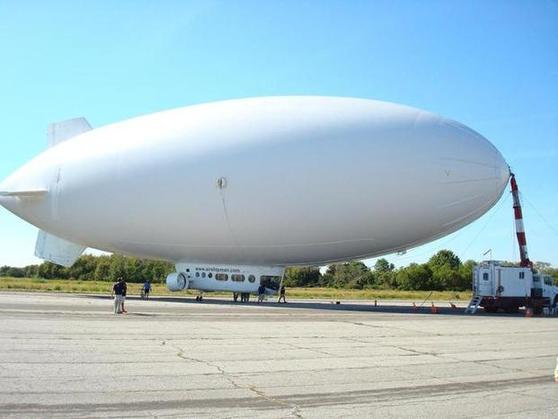
One odd bit of info, possibly a criticism, jumps out at me.
Although the ship has an endurance of 52 hours, patrols will be limited to 8 to reduce crew fatigue. Given the size of the gondola in relation to the 3 person crew, it seems like little effort to install a few bunks. There may be concern regards providing enough privacy for a mixed gender crew, but if this is the case then it is a great reduction in capabilities for utterly PC reasons. There is no reason that single gender crews couldn't be flown, perhaps an all male and all female crew in a blue and gold (blue and pink?) arrangement.
(Of course, it is quite possible that my knee is just jerking and that there are other issues that a junior enlisted Marine Science Tech on convalescent leave is simply not privy to. )
On the plus side, the ship is ridiculously fuel efficient, is faster than any cutter (or destroyer) and has far longer range and endurance that a helicopter, even with the 8 hour time limit.
This is in my humble opinion a stellar idea.
UPDATE: Welcome Information Dissemination readers!
Posted by: The Brickmuppet at
08:25 PM
| No Comments
| Add Comment
Post contains 318 words, total size 3 kb.
Who'd have thought that standards and practices was actually ahead of the curve in all the '80 cartoons redubbed so that the armor consisted entirely of "Robot Tanks".
Posted by: The Brickmuppet at
07:39 PM
| No Comments
| Add Comment
Post contains 34 words, total size 1 kb.
June 20, 2008
Anthony G Williams has the scoop on his forum.
I've just spent some time talking to people on the AAI stand at Eurosatory. They are very interested in developing an intermediate calibre version of the LSAT LMG (c. 6.5mm), and a carbine using the same ammo. If they can meet requirements, the caseless version will prevail (the ammo is much more compact as well as lighter), but if that meets insuperable problems then the plastic-cased telescoped version will be used (that's already been through a successful testing regime). Earliest in-service date is 2014.
There is considerable thoughtful discussion in the associated thread (interspersed with the rantings of a "Munchausen" who wants to use shotguns for designated marksman rifles)
The latest on the US future rifle ammo experiments is here.
An accurate representation of what the caseless carbine will not look like is here:
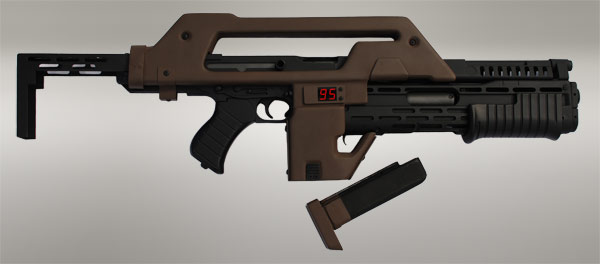
Caseless is actually nothing new....muzzle-loading, black powder weapons are, in fact, caseless. One of the big advances in firearms development was cased ammo, which made repeating rifles practical.
Now the US Army is looking to either get rid of the case altogether or use a polymer case with the bullet telescoped into the round for compactness. Either of these will save considerable weight when multiplied by the number of rounds an infantryman must carry.
The caseless option is a tremendous advance in this area, but it is a challenging prospect. The US, France, Germany, and possibly Russia tried to do something like this for decades with no success. The only successful modern caseless rifles thus far are the now discontinued Heckler & Koch G-11 which served briefly with German Special Forces and actually worked, but was discontinued for mainly financial reasons (oddball, completely nonstandard ammo for one thing)...

...and the rare but extremely neat Voere 5.56 and 6mm bolt action caseless rifles that use electric ignition. The main drawback to the Voere weapon is getting ammo from Austria and the fact that handloading is not really possible.

The polymer cased option is a good fall back and has been pretty much perfected already....
The fact that (from the above quote) they seem to be using this as an opportunity to upgrade to a general purpose round (they are talking about a 6.5mm round.) is welcome news...albiet late in coming. While the .223 round in current use is not nearly as bad as some say (It is killing terrorists quite effectively) it is quite sub optimal and lacks range. Nearly a century after US Army ordinance people determined the ideal characteristics (and developed the .276 Pedersen) and 60 years after the Brits came to exactly the same conclusion...they might finally get an intermediate round with about the same performance that soldiers have been asking for all along.
More on the optimum infantry rifle caliber here and here.
Posted by: The Brickmuppet at
07:24 PM
| Comments (2)
| Add Comment
Post contains 473 words, total size 4 kb.
May 19, 2008
One of the Spanish vessels is seen here visiting Sydney.
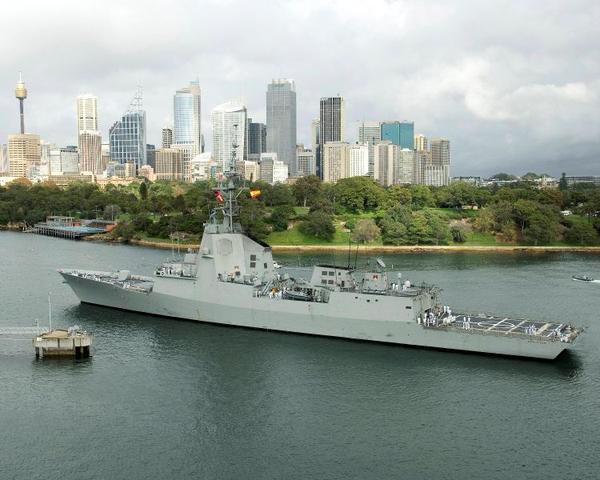
The decision cost the Aussies 16 missile tubes...but the loss of tonnage and the use of an already existing design resulted in a large manpower savings and a sufficient cost savings to allow them to buy a fourth destroyer for nearly the same money as 3. Additionally since this is a design that has been built...the bugs are already largely worked out so the cost overruns are less likely.
According to Eagle 1 the Aussies learned their lesson from the Collins submarine acquisition, in which they got one of the best diesel subs on earth, but could only afford a few and they are expensive to maintain.
The USN is facing challenges in maintaining even a 313 ship navy in part because it buys the absolute best of everything. While it is important to have the top tier vessels like subs and carriers be top of the line, escorts need to be built in numbers, not just for screening the capital ships, but for escorting civilian convoys and detached duties. As Brickmuppet Blog has pointed out before, the best often is the enemy of good enough.
It should be noted in passing that the Spanish design is one of the AFCOM (Advanced frigate consortium) designs and as such can be built by Bath Iron Works.
Update: In the comments, the mysterious "leesea" points out that CDR Salamander posted the analysis of Joe Katzman of Defense Industry Daily.
Posted by: The Brickmuppet at
09:12 PM
| Comments (1)
| Add Comment
Post contains 275 words, total size 2 kb.
May 11, 2008

The second of the Legend class, USCGC WAESCHE WMEC 751 is nearing completion and is naturally under considerable scrutiny regards quality control and design issues learned in BERTHOLF.
The Fiasco that has been the National Security Cutter program has led to some laypeople to propose putting a fork in it.
The response of course is that the ships are still needed, restarting the program would be expensive and would not take into account the hull specific lessons learned with the lead vessel.
If all lessons are learned and this ship is completed without the issues of its predecessor then the Coast Guard will have a very fine ship indeed. EVERYTHING I have hard about these vessels design is that they embody every thing that cuttermen have been asking for for 30 years.
Of course it is expensive, the best costs a lot.
The best can also be the enemy of the good.
These high endurance cutters, if they don't have any cost overruns will cost over 450 million dollars apiece....for offshore patrol vessels.
I recently blundered onto this PDF, which is concerned with the state of the Australian shipbuilding industry. This is interesting because at the bottom there is a list of most of the ships built in Australia in the last few years...and their costs....in US Dollars!
Australia has been building a lot of well regarded low end naval vessels for various countries....lets see what those countries are paying and what they get.
New Zealand has ordered a series of offshore patrol vessels from the Australian firm of Tenix.
These are actually designed by the Finnish firm of Aker which designed the Healy as well as the new Mackinaw. They are ice strengthened and designed to serve in the horrific conditions of the southern ocean, which is broadly comparable to the Bering Sea in sheer nastiness. A good overview of them is here.
They are slower than the WMEC 750's and they are certainly inferior in some respects, but they cost 45 million. The WMEC 750's cost 450+million (and the Bertholf is breaking 600 mil)..thus being generous and going with the promised rather than demonstrated cost one comes up with.....
10 of these for one NSC...or 60 of these vessels for the cost of the remaining 6 Legends.
The finest ship in the world can only be one place at a time...as the Russians like to say, quantity has a quality all its own.
Going down the scale we find another Tenix design. This time for the Philippine Coast Guard, the 56m San Juan class provides broadly similar capabilities to the Coast Guards 210' Reliance class. They are slightly smaller, have about half the crew and 6 knots faster. A company brochure on them is here and there is an industry analysis of their construction here.
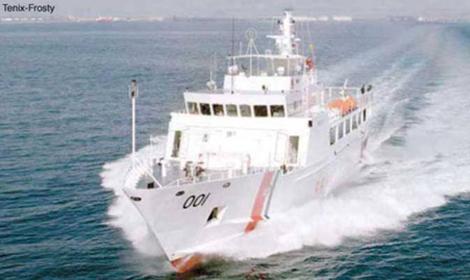
They are fitted for (but not with) a 25-35mm auto-cannon on the foredeck (a strong point and provision for a magazine are provided) and carry such gold plated items as a decompression chamber for diver mishaps and a rescue/triage compartment for 300 people! At 25 knots they are slower than the USCG would like but unlike the Otago class mentioned above they are developed from a fast attack craft, thus their hulls are likely more amenable to high speed with uprated engines. Of course the Phillipine CG chose these engines for their outstanding fuel efficiency...something that is likely to become more pressing than 3-4 knots speed. No helicopter hangar but they have a pad and at any rate at 183 feet long are close to the USCGs high end patrol boats, of the Cyclone class. (The CG is short of patrol boats btw.)
The low balled cost of one WHEC750 would buy 23 of these vessels. All 6 would provide us with 138 patrol boats...with helicopter decks.
Golly....
This SAR vessel is the break point between the medium endurance cutter and patrol boat. The Australian firm of Austal, which is involved in the LCS contract provides the Royal Australian Navy with a similarly sized patrol boat, the Armidale class. These vessels have no helicopter deck but have a 30mm gun two large rescue/inspection craft, a speed of 26 knots and are designed for patrol in the hellish southern ocean as well as SAR ops in the teeth of Willie Willies. They are very seaworthy for their size and are reportedly highly regarded.

At 14 million apiece 32 could be purchased for the cost of one WHEC750 or 182 could be had for the cost of the rest of the program.
Golly willakers....
Tenix makes a broadly similar steel hulled, ice strengthened vessel for the Kiwis that is a bit more expensive at 20million a pop.
Due to the size restrictions of many small boat stations, the Coast Guard prefers its patrol boats to be somewhat smaller than this, which is one reason we didn't simply build more of the successful WPC179's.
Helpfully Tenix provides a smaller companion to its 56m Search and Rescue
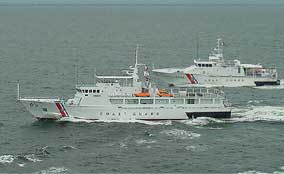 Vessel....The 35 Meter patrol boat is very much more in line with USCG ideas on patrol boats....seen here behind one of her larger half sisters.
Vessel....The 35 Meter patrol boat is very much more in line with USCG ideas on patrol boats....seen here behind one of her larger half sisters. 30 kts, a 30mm gun and a rescuee/triage area (not included in the PDF) . At 8 million dollars apiece thats 56 per NSC and for the program...336
Jeepers Golly Willakers!!
OK this is getting silly...pier space alone is an issue not to mention 6720 cuttermen if the vessels have a realistic crew of 20 in CG service.
There are lots of designs from around the world including, I'm sure the US, I just found numbers for the Aussie designs.
In an operational area as big as that of the USCG some large cutters are certainly necessary, and a far larger number of small patrol boats is desirable. Also the NSC program is not the alpha and omega of USCG budget.
The point of this above the paygrade rant is to suggest that we could spend the money better than on 8 ships, we plan to run ragged. This is true however fine the ships in question may be.
We could buy scads of cruising and inshore patrol cutters and use the money saved to buy a few icebreakers which we have to buy anyway, or even airships.....which are certainly cool , but I don't have any cost info.
UPDATE:
Spelling, syntax errors fixed.
There are many things that the linked PDF does not cover, including life cycle costs, such as fuel consumption and manning. As stated previously...contractor quality control issues notwithstanding, the Legend Class is a very impressive design. The purpose of the post is not to bash that design, but rather to ask if that capability is worth the reduction in unit numbers it inevitably entails.
Welcome readers of Unofficial Coast Guard Blog and Information Dissemination . This blog has no format and generally deals with fluff, but, if this interests you, then you might peruse the category list, particularly weapons n' kit and Maritime Matters ....Thanks for stopping by!
Posted by: The Brickmuppet at
01:22 PM
| Comments (4)
| Add Comment
Post contains 1177 words, total size 9 kb.
May 10, 2008
I am respectfully in disagreement.
Here is the deal. The Coast Guard bought a super whammodyne cutter some time ago. Named after the first Commandant of the Coast Guard, it is the largest vessel other than icebreakers the USCG has ever purchased.
It is bigger than a Perry Class frigate, has an innovative stern launch arrangement for its boats. It can conduct helicopter operations in Sea State 6. It brings together all the lessons learned from over 2 centuries of institutional expertise. It is ...on paper...a spectacular vessel.

As you likely guessed from the mention of paper in that sentence...it also has, as they say..."issues".
There have been concerns raised about weather the vessel will meet its planned 30 year service life (It won't unless it gets a structural refit in the next 4-6 years). The vessel costs more than the entire defense budget of Ecuador, and its C4I system is not secure.
This last is possibly the most important and expensive. The communication, command, control, computing and intelligence system needs to be absolutely secure electronically. The Bertholf's leaks like a sieve.
Now the Coast Guard has certified the Cutter as seaworthy and allowed her to be commissioned. The ship passed her trial run and was given a clean bill of health by the Navy and Coast Guard.
They did this despite the fact that the C4I system is insecure and cannot be used for any encrypted messages.
This has some people up in arms, and while their upsettedness over the Bertholf is understandable (this thing has been a fiasco) I think that the anger over this particular bureaucratic maneuver is misplaced.
A few weeks ago Admiral Rosa came and talked to our unit about various Coast Guard issues, inspected the troops and took questions.
Naturally, Deepwater came up.
The Admiral said that the aviation component of the Deepwater Program was proceeding quite well but that there had been many expensive lessons learned on the maritime side.
We were told that the structural issues on Bertholf were rather overblown and would not affect seaworthiness or safety and that the C4I issue was in fact the big problem. The ship will commission though it will take a long time to get the C4I stuff TEMPEST certified. The vessel is still a useful asset and will be capable of doing Search And Rescue and other operations without TEMPEST standards being met.
(TEMPEST is a set of standards for military communications and that is all we will say on that.)
This is jives pretty well with the facts as we know them.....no real sinister cover up going on regards this. Its the most obvious solution to the problem. It is heads and shoulders over David Axe's proposal.
If the Coast Guard were truly responsible stewards of the taxpayer’s money, the service would have rejected the ship, returned it to builder Northrop and electronics maker Lockheed, and demanded a refund.
While his idea has appeal on a visceral level, the cathartic payoff of such a drama queen temper tantrum does not compensate for the loss of a still useful ship at a time the USCG's assets are stretched thin and at the end of their operational lives.
Despite the expense and gravity of the procurement debacle, I see no reason to get the vapors over this particular decision. Getting the ship certified for sea duty sans its full C4I suite was, IMHO, the correct thing to do. I assume the ship can even operate with bolt on encrypted radios from, say, the Army if it comes down to it.
Having a 500 million dollar "Building 750" sitting as a humiliation to the Coast Guard does not save any mariners in distress nor leverage any good out of this situation.
Now lots of people are anxious to see the heads of Admirals roll over this debacle. This is understandable. However, it now seems that most, if not all of the wrongdoing was on the civilian side, in particular a civilian who signed a document waiving the security standards for the contract....which he was not authorized to do, but is a get out of jail free card for the contractor.
The Coast Guard has not had much experience in procurement for the simple reason that we haven't been able to buy a lot. The only recent experience was with the 87's, the buoy tenders and the Healy. All went (er...relatively) smoothly as I understand it in part because the shipyards in question were small, civilian and generally ethically run....certainly in comparison with those who make money off the byzantine DOD procurement system.
The officers who took this job certainly did not cover themselves in glory, but it is unclear that they were incompetent or negligent as opposed to simply being inexperienced and unsupported in these matters. The contractor in question successfully butt-raped the Navy with regards to the LPD 17. Keep in mind that the USN has far more experience in dealing with defense contractors.
In the military, discipline and professional development is not about vengeance, it is about correcting mistakes and preventing their repetition.
Throwing senior officers overboard because they got set up for failure might give David Axe a woody, but it is not good leadership. To the extent that the Commandant is standing by and protecting his officers, many of whom have had long and honorable careers in the service of their country, he is doing exactly what good chiefs do for their enlisted people every day.
The priority now is to learn what went wrong, apply those lessons, see that this doesn't happen again and get the ship and her sister operational.
If there WAS wrongdoing on the part of any USCG officers then there is always a dark place in Leavenworth, but I think the Commandant is doing the proper thing trying to fix the problem rather than hunt for scapegoats.
I'm a third class enlisted and these issues are waaay above my paygrade, but the whole thing at this point seems to be beating a dead horse.
The ship has defective, insecure coms, and I would expect that the repair of the C4I system is going to be along the lines of George Washington's Axe.
However, it is not unseaworthy, it is new, big and capable of doing many things but is of limited use at a pier.
The USCG certified the ship as commissioned so they can use an imperfect asset to save lives and such. In order to do so they used "Yeoman-fu" to bend the pencil so they could ignore the broken radios and yet still accept the ship.
This seems like a reasonable response to a bad situation.
Of all the mistakes and screw ups that have occurred with the construction of this vessel, this pragmatic decision seems to be the last thing one would get upset about.
Posted by: The Brickmuppet at
11:58 PM
| No Comments
| Add Comment
Post contains 1161 words, total size 8 kb.
April 27, 2008
With regards to a general war, the USN NEEDS anti-submarine and and anti mine forces.Such missions and peacetime showing the flag missions, also require a fair number of ships.
One of the most effective ASW aside from a hunter killer submarine is the helicopter, which is a good minesweeping tool as well.
Escorts to carry helicopters such as the Perrys' are being decommissioned faster than they are replaced and the Littoral Combat Ship is far too expensive to buy in bulk.
The LCS is in some ways too big for close inshore operations, and it is too small to act as a mother ship for a large number of manned and unmanned vehicles. Both versions use experimental hulls that push computer design capacities to the limit, with possibly unfortunate results and are weight sensitive in regards to their design speed....which seems inexplicably high.
First a bit of review...
The US and UK determined in the '50s and '60s that helicopters were disruptive to more conventional flight operations, I assume that this is still the case. I also assume STOVL aircraft with their takeoff runs are only marginally less affected by this. The original UK solution, if I understand it, was to put the helicopter assets on an escorting light carrier (dubbed a cruiser).
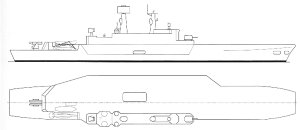 These designs
had varying degrees of armament but most IIRC had through decks as this
maximizes
helicopter landing spots for surge operations. As it was, the CVA01 was
canceled and the only aviation asset that could be salvaged was the
cruiser which was
saved in part by its designation. To maximize its aviation capability
and save money in an ever shrinking budget, most of the multipurpose
capability aside
from commando carrying was sacrificed. This was HMS Invincible.
These designs
had varying degrees of armament but most IIRC had through decks as this
maximizes
helicopter landing spots for surge operations. As it was, the CVA01 was
canceled and the only aviation asset that could be salvaged was the
cruiser which was
saved in part by its designation. To maximize its aviation capability
and save money in an ever shrinking budget, most of the multipurpose
capability aside
from commando carrying was sacrificed. This was HMS Invincible.
The USNs answer to the same issue was to have scads of escorts operating one or two helicopters so that a carrier (or a convoy) would be accompanied by 15-20 helicopters robustly dispersed in ones and twos amongst the escorts. This made sense when we could afford ~10 escorts per CV or convoy,but on a ton for ton and likely expense basis the helicopter cruiser might be more economical.
Steel is cheap in comparison to the electronics system of a warship. The size of a vessel does not dictate its affordability, systems do.
So...what should we build? What should it have?
This vessel needs an air defence capability beyond that offered by RAM, but it does not need an air defence system in the same class as an all-up Aegis system. Something like NTU firing fire and forget missiles (such as the mooted ESSM
If a through deck is not utilized then JDS Haruna or the Danish Absalon would be close to what we're looking for. Note that Absalon costs between one half to one third what the LCS does without its canceled weapons kits.
This brings up the question regards weather or not to use a through deck. This would give the following nontrivial advantages :
3-4 extra spots to get helicopters in the air quickly for mass rescue, troop landing or whatever.
Even airflow over the deck, uninterrupted by a centerline superstructure. This is important as it affects landing safety far more than is appreciated and while not nearly as crucial for helicopters as fixed wing planes it is still a concern.
The ability to land amidships at the point of minimum pitching allows helicopter operations in far worse weather than a stern landing pad.
Small fixed wing UAV's can use it like an old fashioned carrier, and possibly even small coin airplanes in a pinch if the government ever deigns to buy them for close air support.
On the debit side, a flight deck is...well.. a flight deck, and to uninformed or malevolent congresscritters looking to knick money for their idiotic Ponzi schemes it is a "carrier" and there will be a temptation to use it as a replacement for a CV which it certainly is not.
That concern aside, the versatility of the through deck is pretty compelling. It just needs to be made clear that this is not really a carrier, but a general purpose vessel.
One further thing that should be considered would be utterly without merit on an actual carrier. On a general purpose ship an effective gun is generally desirable.
Guns are fairly economical in both expense and volume. Ideally, for littoral warfare, fire support guns should be on a small inshore vessel, a monitor of sorts, like the UK and Italians used in WW1, but this is unlikely to be afforded.Its also possible that "netfires" from small craft perhaps even drones will replace tube artillery for fire support, but I doubt it.
So stick a 127-155mm gun on our escort. Assuming its main gun is fairly economical like the UKs' 155mm project and not a gold plated tube to shoot money out of (like our AGS) the gun should be an economical fit. There are issues with blast and interference with other ship functions, but helicopter ops can be kept well away from the gun during firing.
A carrier with a gun is certainly anachronistic but...again...this is not a carrier. It's a gunboat with helicopters...an aviso perhaps.
This leaves us with something akin to the Japanese Osumi or this off the shelf design from HDW. Osumi has one disadvantage, she cannot land helicopters amidships due to blade clearance issues, but is otherwise very interesting. She has 2 and potential for 3 landing spots, a big hangar and a well deck that can accomodate 2 LCACs, yet at 8,900 tons she is smaller than a DDG 51 and far cheaper than an LCS.
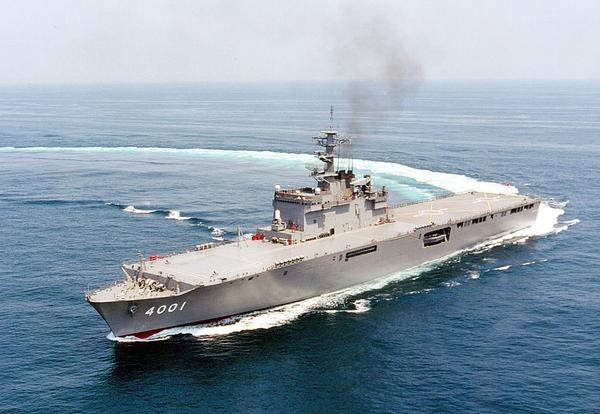
This ship was reportedly based on the smaller Italian San Giorgio, which boasts a 76mm gun, a well deck and an LST style bow ramp(!?)

A large fairly austere hull is inherently versatile. Troop carrying, the ability to act as mothership or tender for small craft like the CB90's or perhaps FACs, or loaned Coast Guard patrol boats looking for pesky pirates are all possibilities. ISO containers for disaster relief or just greatly expanded medical facilities would greatly facilitate the sort of "soft power" operations that are so important in "peacetime". In a hot war provision for a big VDS fish and ASW helicopters would give the sort of ASW capability that everybody except the Japanese seems to be either ignoring or selling to Chile.
Regardless of configuration, such a project would need absolutely ruthless oversight to keep people from adding whistles and bells and pricing it out of reach.
With every shipbuilding project going through the roof what references do we have for how cheap should it realistically be?
Well, at the high end, note that the above linked HDW design (which, is by far the largest of the three linked) is 15,000 tons, which is less than 4 times the size of a USN FFG 7. This vessel only needs one AAW system (though more modern obviously).
Aviation maintenance facilities carry a certain price tag associated with them but if built at least partially to commercial specs such a vessel could be fairly cheap. Additionally, 4 FFG7s already require 8 helicopters, so, given the fact that larger ships are more economical per ton, it is not unreasonable to assume that costs might be within the ballpark of 3-5 FFG7's...or 1- 1.5 LCS's... for a far more versatile ship that could act as an escort carrier in a major war. That is for the big one, though given the need for a fire control system and weapons the costs do not scale down linearly with size.
Nevertheless, this could be an economical and versatile solution indeed.
An earlier post on related matters is here.
* image of UK escort cruiser proposal is from Richard Beedal's superb Navy Matters site, which is about the best place on the web for info regards the UK Royal Navy.
Posted by: The Brickmuppet at
10:57 PM
| Comments (2)
| Add Comment
Post contains 1407 words, total size 11 kb.
April 05, 2008
Now both wrecks have been found and they are being explored by the Finding Sydney Foundation. Here is a lengthy report on the ongoing examination of the Sydney wreck .
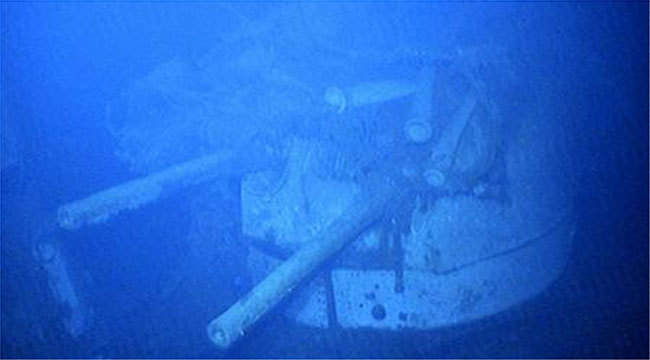
Posted by: The Brickmuppet at
06:43 PM
| No Comments
| Add Comment
Post contains 65 words, total size 1 kb.
Flaming Bayonet..... That’s right a flame throwing bayonet. It was called the "Flaming Bayonet, constructed and tested by the Army Chemical Service it was a unique weapon for it’s time. The idea was to launch a ten foot flame as you were about to close in with the enemy for a bayonet thrust.....
No really...
Here is a picture...
|
|
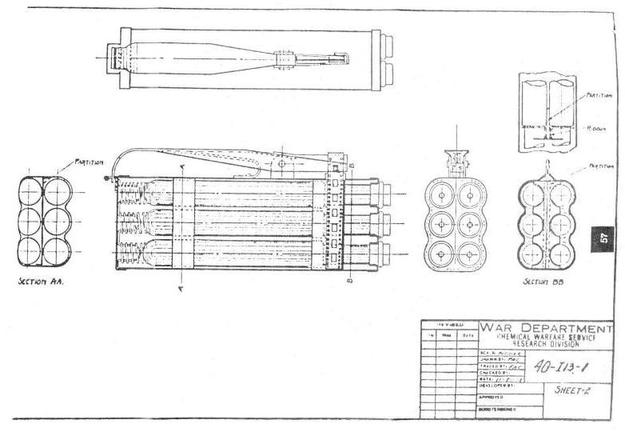
Wow
Just wow....
Posted by: The Brickmuppet at
05:10 PM
| Comments (1)
| Add Comment
Post contains 101 words, total size 1 kb.
March 11, 2008
The M-16 is a 50 year old design, the M-14 is slightly older and based on a WW2 design. Both have been surpassed by developments around the world..
The X-M8 was widely regarded as the most likely replacement for the M-16 and, indeed proved to be astonishingly rugged and reliable. There were a few bugs including a nontrivial ergonomics issue but this and the others could have been easily fixed. Yet the Army canceled the program. Recently the Army conducted sand tests and the M-4 (an M-16 derivative) did rather poorly in comparison to others. Yet the army is determined to continue buying M-4s.
Why?
Well, it looks like they don't want to waste money to retool now, when something far better may be on the way.
The Army is conducting tests with both caseless and plastic cased telescoped ammunition. Both of these promise vast reductions in weight and bulk and the caseless ammo in particular is a huge advance in these areas.
Here is a video of the field tests.
This seems to just be the case telescoped ammunition...as there are...you know...cases being ejected. For those that haven't seen it here is the May '07 unclassified LSAT presentation. I draw a glimmer of hope from the fact that this is stressing scalability somewhat more than the 2006 version. Thus there is some hope that the final projectile is 6-7mm intermediate round that could replace both our current rifle calibers.The main goal however, seems to be the big reduction in weight for the infantryman..a worthy goal indeed. Lets hope this works out. |
Posted by: The Brickmuppet at
09:49 PM
| No Comments
| Add Comment
Post contains 299 words, total size 2 kb.
February 18, 2008
I love the "Quinn/Martin" music..
It certainly looked good and its stats are quite impressive on paper. The compound design is being revisited today. I do wonder if this thing was killed more out of an NIH problem than any operational deficiency.
Hat Tip: SECRET PROJECTS
Posted by: The Brickmuppet at
09:36 PM
| Comments (4)
| Add Comment
Post contains 54 words, total size 1 kb.
February 12, 2008
Blackfive has some cool photos of all 5 of the US military services, the absolute high point of which is (of course) one of USCGC Bertholf on sea trials being overflown by one of the prototypes of the new Ocean Sentry HC-144 patrol aircraft.
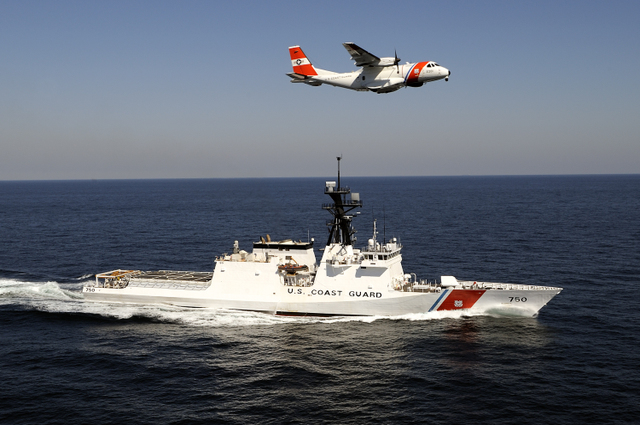
Posted by: The Brickmuppet at
09:14 PM
| Comments (1)
| Add Comment
Post contains 47 words, total size 1 kb.
February 06, 2008
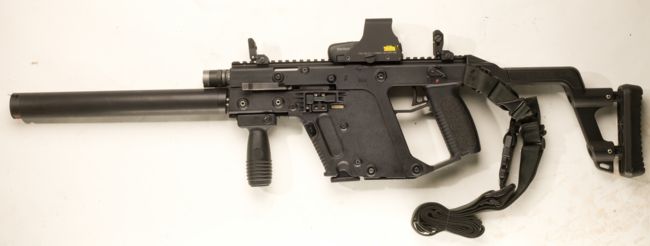
The weapon has an innovative recoil compensator, and while not truly recoilless, it greatly reduces felt recoil and therefore increases accuracy.
The fairly low velocity and heavy bullet of the.45 ACP round has tremendous stopping power against people at short range and the lack of penetration is actually a big plus in a home defense situation.
More from the manufacturer here.
Posted by: The Brickmuppet at
08:32 PM
| No Comments
| Add Comment
Post contains 77 words, total size 1 kb.
December 01, 2007
James Rummel has the answer.
Posted by: The Brickmuppet at
09:07 PM
| No Comments
| Add Comment
Post contains 10 words, total size 1 kb.
November 04, 2007
The navies light forces mess is about to come to a head in the next few years. At the same time shrinking defense budgets the pullback of European Navies from areas the once patrolled and the general rise in lawlessness and militant Islam have fueled a surprising resurgence of piracy.
Surprisingly, this may be ameliorated a bit by using the Coast Guard.
First, bit of background...
more...
Posted by: The Brickmuppet at
05:46 PM
| Comments (2)
| Add Comment
Post contains 3276 words, total size 26 kb.
October 13, 2007
Via a thread on Anthony Williams site comes this interesting web-page devoted to the CJB MS, a Personal Defense Weapon concept built around a new 6.5 mm cartridge.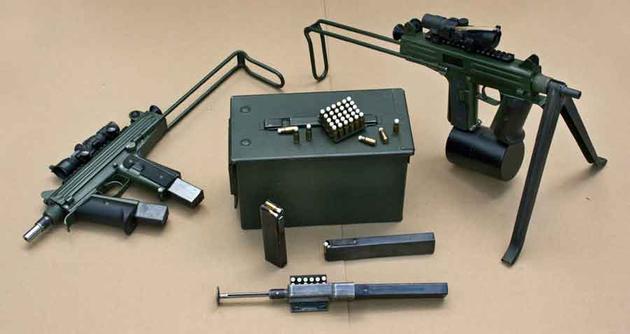
This round, the 6.5 CJB, is not in the league of the well regarded 6.5mm Grendel....it is a necked down 9mm parabellum that fires a discarding sabot round. The round, less sabot, is 4mm in caliber which does not tend to impress...especially given the issues that have been reported with the 5.56 NATO round.
The penetrator however, is made of tungsten and is quite long, giving very good sectional density. It also travels very fast (2723fps from a 7.9 inch barrel!)
More on this weapon here at Security Arms where it is mentioned that the new round generates around the same level of firing impulse as an average 9mm round making the barrels swap option practical. (this display actually has a 9mm barrel mounted on the weapon! ) For some years this site had been all I'd been able to find about the CJB MS.
This weapon reportedly has better penetrating power than the 5.7mm FN and 4.6mm H&K. It is also CLAIMED to have an effective range of 400 yards (if so, this is a truly impressive round to be fired from a 9mm sized weapon).
Ballistic gelatin pics are halfway down this page and they do look impressive, though there is little data on, say, the MV or barrel length of the weapons that fired the respective rounds. I imagine this round will better than the 5.7 but might still have some stopping power issues. Nevertheless, the ease of modifying 9mm weapons to fire it and the ability to fire common as dirt 9mm ammo in the CBJ MS with a simple barrel swap* would seem to male this a really interesting military weapon with a lot of potential.
I wonder if "spoon-tip" ammo is Geneva legal?
The gun can accept a 100 round drum which seems unrelated to any of the high-cap mags on the market today. It will be interesting to see if it is reliable.It is very compact when mounted but the feed extension is likely to make storage in an ammo pouch awkward. Still, 100 rounds is good to have for suppression.
Keeping in mind that my tactical experience consists of crawling through a mock freighter twice....er....and hundreds of hours of playing first person shooters, I'd say make the foregrip collapsible so it could be holstered. This would be very close to what the Army and Marines need in a PDW. It could be carried by second line troops on the hip, keeping both hands free for their primary duties. This also makes it less likely that their gun will be in the hummer when they need it.
With its collapsible stock and the addition of a collapsible foregrip it would seem to me to be easier to aim and use than a pistol. As stated most 9mm pistols can be converted to fire this round so you have a common ammo for better logistics. The UZI style magazine in grip takes advantage of the "hand finds hand" principal for quick reloading and makes the weapon shorter too. I like the self cleaning action of the sabot, that's cute! ![]()
One final note. A splash of cold water seems in order given the very boosterish nature of the above linked website. This weapon and the round in particular, does seem to have considerable potential, but it is not a wonder weapon. All weapons are compromises and 4mm projectiles, even very long ones, should serve to give one pause at a time that 5.56 rounds are generating doubt. This weapon may well fill a crucial niche and it is certainly very interesting. At the same time it is important to remember how overhyped the 5.7 FN was.
Still, I think it bears testing at the very least.
Posted by: The Brickmuppet at
06:48 PM
| Comments (2)
| Add Comment
Post contains 656 words, total size 5 kb.
September 02, 2007
Via Danger Room comes this Ares post on an innovative sea-basing concept based on a trimaran hullform. The idea is to operate C-130 sized aircraft from a carrier on a regular basis! As pointed out in the article, the US Navy operated a C-130 off of USS Forestal in the 60s but wing clearance of the island was precarious and it pretty much required all other air ops to stop.
The trimaran would allow a much wider flight deck...even given the above deck hangars contemplated for the big planes. Another aspect of the hullform is that despite the larger deck dimensions, the ship would displace a little more than half what a Nimits class carrier does. A pdf of the powerpoint is here .
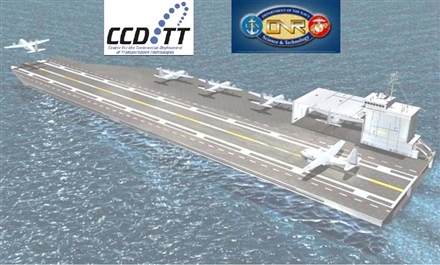
With a top speed of 35 knots, faster than a lot of surface warships, the ship makes a startling contrast to the fairly slow moving (but fricking GINORMOUS) modified oil rigs that have been mooted for the mobile offshore base concept over the past decade. (more on that here and here.)
The trimaran hullform is new but has been tested by the Brits and Aussies on various mid-sized commercial vessels...though nothing this big.
The propulsion seems to be a decision between commercial off the shelf diesels ( Sulzers) and a British designed nuclear plant.
Now, I like atomic power but the narrow beam of the individual hulls would seem to provide insufficient saftey separation from the sea unless a very innovative safe reactor design is chosen. Anyone with thoughts on this please comment.
According to the pdf, they are looking at having it being buildable at several US shipyards and are designing a structurally similar vessel for the merchant marine, initially with intercostal trailer transport in mind. Both these seem very wise, both to expand our currently declining shipyard base (or at least hold it steady) and have carriers be buildable at shipyards other than Newport News.
Building the ship to commercial specifications exites me less....there is a big difference in ruggedness and I have heard on navy related forums that HMS Ocean, which was built to commercial spescifications has had problems resulting from COTS design practices. I've not heard specifics though.
Certainly something needs to be done to bring down shipbuilding costs, however, steel...even HY 130, is a lot cheaper than electronics.
This option does however lend itself to economies in maintenance and yard time as well as (possibly) faster construction and repair (if most shipyard workers are familliar with the work).
Again, anyone with actual experience in this area please chime in.
Posted by: The Brickmuppet at
07:56 AM
| Comments (6)
| Add Comment
Post contains 436 words, total size 4 kb.
79 queries taking 0.1254 seconds, 247 records returned.
Powered by Minx 1.1.6c-pink.









